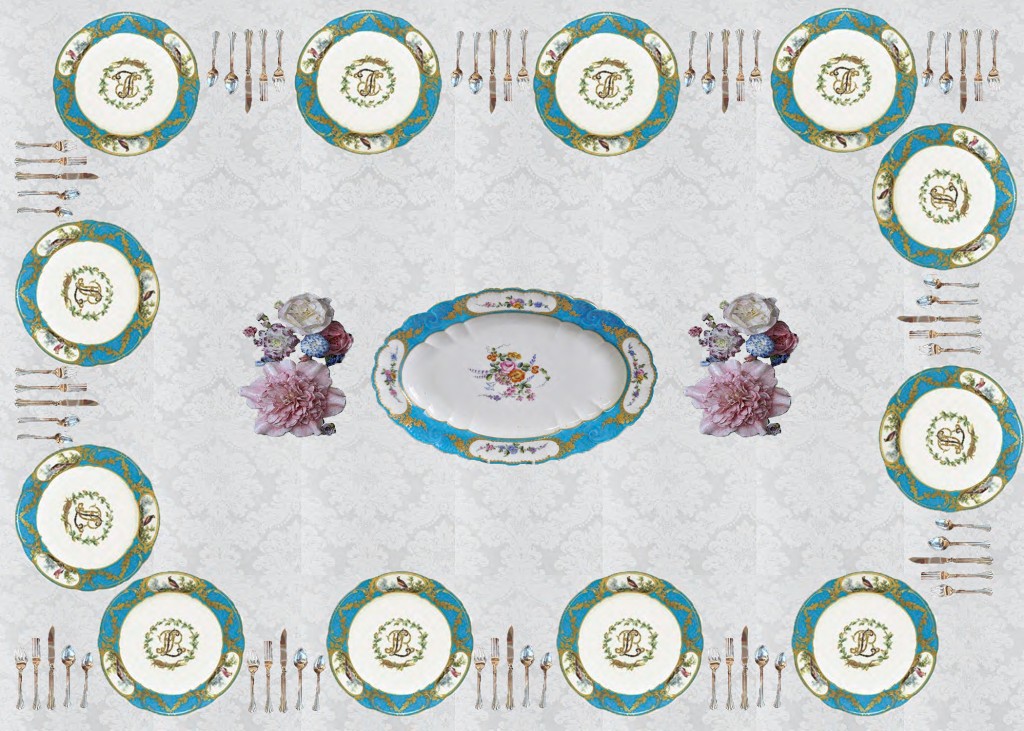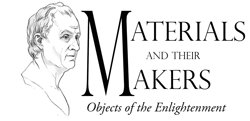b-leu ce-lest
A Celestial Tone
Bleu Céleste, which in English translates to heavenly blue, is a soft and bright shade of blue. This hue, according to scholarship on color theory, is said to be derivative from Saxon blue and Saxon green. Saxon blue and green are rich colors developed by the Meissen porcelain factory in Germany in the eighteenth-century. Both colors were in use at Meissen by the time Jean Hellot, was hired by the Sèvres factory, in 1750. Hellot’s position at Sèvres involved overseeing chemical innovations in the ground colors of the eighteenth-century. Hellot, who invented bleu céleste, was probably inspired by examples of Meissen porcelain in these two colors.
Jean Hellot, the primary chemist at Sèvres, had previously held a post as the head of the Académie des Sciences. While at the Academy, he had written a treatise on textile dyes titled “Théorie chimique de la tenture des étoffes” in 1741 and it is therefore, perhaps, superfluous to say that he came into Sèvres with a profound understanding of color theory and with knowledge of the chemistry of color. According to Sèvres historical archives, Hellot was called into the manufactory to perfect ground color variety and more specifically, the shades within colors used. Hellot’s genius with the manufactory’s eighteenth-century palette definitely contributed to the factory’s success and fame.
This shade of blue, bleu céleste, was invented for the first dining service ordered by King Louis XV. Displayed for the first time at the Versailles New Years Sale in 1753. In the years and decades following, bleu céleste existed as Hellot’s most desirable and expensive invention. Although all of the eighteenth-century Sèvres ground-colors had to be somewhat affordable for the factory to produce sets and large quantities of each, all six varied slightly in price and therefore in luxury. Not only did different raw materials have to be ordered in and or imported from abroad, the chemical formulas and labor intensity varied among the ground colors. It so happens that Bleu Céleste became the most famous of Hellot’s ground colors because it was the hardest to produce and therefore the most expensive.
The process of inventing new colors throughout the eighteenth-century at porcelain factories like Sèvres and Meissen were extraordinary, specifically because chemists like Hellot were utilizing a new medium of soft-paste-porcelain to formulate tones that were both aesthetically new and technically revolutionary. Soft-paste-porcelain (pâte tendre) is artificial porcelain invented in Europe to imitate hard-paste, or the true porcelain of the East. In order to develop porcelain individuals had to undergo trial and error on a large scale. Furthermore the ingredient required to produce true porcelain was a pure aluminum silicate known as kaolin. This is known now, but in the eighteenth-century chemists and inventors knew nothing about kaolin or where to find it. As such, soft-paste-porcelain sufficed in place of true hard-paste-porcelain; soft-paste is artificial and made with powdered glass as a substitute for the kaolin used in hard-paste porcelain. Other differences between soft and hard paste porcelain include heat resistance and translucency; soft-paste porcelain is fired at a lower temperature than true porcelain and is not as translucent as kaolin- based porcelain.

This image is meant to act as a visual guide for viewers to see a set of Sèvres plates together in a dining setting that is historically accurate in regards to eighteenth-century customs. This table setting displays twelve bleu celeste plates atop a white damask table cloth in partnership with silver eighteenth-century cutlery, with a centerpiece of two Vincennes porcelain flower arrangements flanking a blue celeste Sèvres serving platter.

